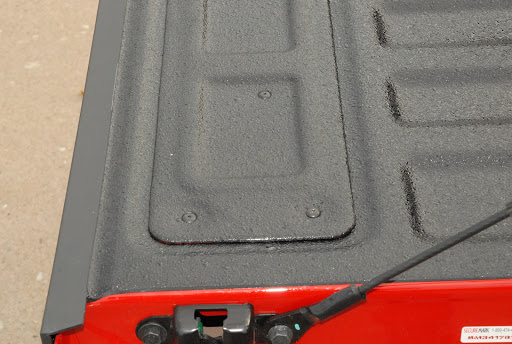Been sanding away on the first "skim coat" of the Bumper Bite flexible glaze, and I've already learned two things.
1- Go easy on the amount of hardener used
and
2- Let it cure for a good hour before hitting it with sandpaper
I learned #1 on the first batch I mixed. The excess hardener gave me a pot life of about 3 minutes, and the stuff kicked so hard and so fast that the spreader I was using got stuck to the bumper! It quite literally "froze" as I was wiping it on.
I learned #2 trying to clean up the mess I made learning #1.
Forgot to snap pix of the skim coat and sanding as I was busy cleaning it off, wiping it down with solvent, and shaking the can of primer, which I used tonight for the first time. You really have to put this stuff down in "Medium WET" coats to get any coverage.
And this is why we prime things:
These are all flaws I missed. I could kinda-sorta feel them with my fingers, but I couldn't see them due to all the different colors of plastic, paint, and filler resin. They just disappeared into the visual "noise" of the random splotches of color, so while I could barely feel them, I couldn't see how deep they were.
These are shallow enough that the Bumper Bite should fill them, and it's MUCH easier to sand than the repair resin.
SO......after the primer fully cures, I'll carefully mix up some more Bumper Bite, and wipe a coat into all these sunken areas. Let it sit 30~45 minutes, and it sands off pretty easily, like a "lightweight" polyester filler.
More to come.....
































.jpg)
